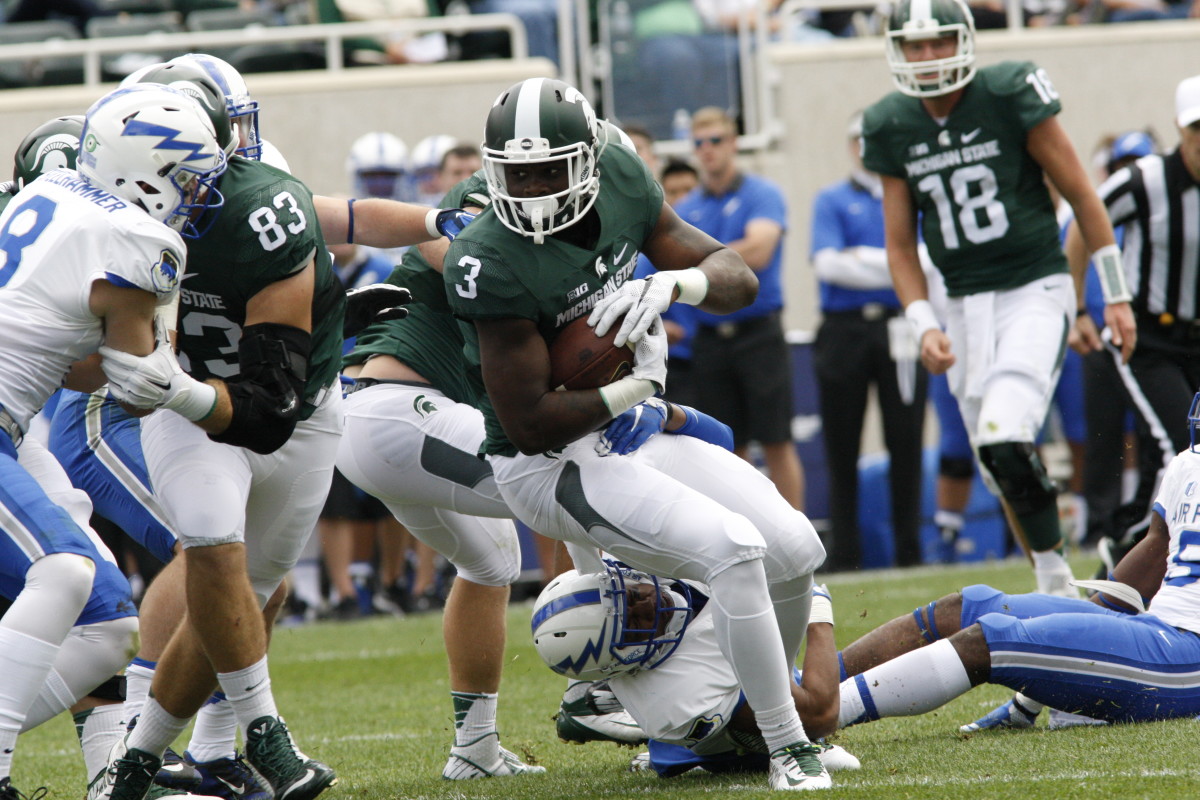Safety Technologies to Tackle Concussions: How Fewer Injuries Can Help the Spartans

Safety Technologies to Tackle Concussions: How Fewer Injuries Can Help the Spartans
As noted here last August, the injury of electric cornerback Josiah Scott actually underscores the Spartans’ depth in that position. Justine Layne, Josh Butler, Kalon Gervin and Shakur Brown have all stepped up admirably to fill the void left by Scott, who is nearing a return for Michigan State.
But while Scott is set to return to action at some point, other Spartans have been injured as well. Notables among the Spartans’ walking wounded include running back LJ Scott, receivers Cody White, Cam Chambers and Jalen Nailor, right guard Kevin Jarvis and guard David Beedle. These injuries have been burdensome to head coach Mark Dantonio and his wards, who have predictably wobbled out of the gate, losing two of their first five games.

Coach Dantonio, though, isn’t blaming this spate of injuries on the Spartans’ uneven play. Injuries come with the territory. This was true decades ago and is still true today, which is why the NCAA mandates players to wear hip, thigh and kneepads. Said pads, stronger and more lightweight now thanks to technology, provide a layer of protection for today’s football players, but only against high-impact hits to the body. Invariably, they are not enough to completely prevent injuries such as sprains, muscle pulls and strains and ligament tears.
Indeed, even the latest in padding technology is not the answer to the Spartans’ injury woes. Scott and company, however, can take heart in the pioneering efforts of Michigan State University chemistry professors Marcos Dantus and Gary Blanchard, who invented a mechanism that helps trainers and doctors know the magnitude of head hits.Blanchard and Dantus created a headband “equipped with three removable Band-Aid-sized strips capable of detecting and differentiating between the impacts football players withstand in practices and games.” Said strips contain ink that “displays differently depending on the amount of force withstood.” Moreover, they are strategically located, with two on each side and one in the front, where high-impact hits are most likely to occur.
The issue of concussions has been, in a word, contentious, with the link between concussions and chronic traumatic encephalopathy (CTE) crystallizing more and more with every study. As Brian Resnick explainsin his Vox long-form article on football and CTE, this degenerative brain disease is caused by repeated concussions and the accumulation of less severe hits to the head. Worse, it is “frighteningly prevalent among players,” with even those playing high school and college football seemingly at risk.
The concussion-CTE connection has predictably been a bane for the game, which has steadily seen a drop in players at the high school level. In response to this crisis, the NFL, the ultimate destination of those dead-serious about football, has implemented measures to address the problem of concussions. Coral reports how the league has introduced smart helmets that “reduce the risk of brain injuries using sensors and magnet technology.” At the forefront of this smart helmet technology is helmet-maker Riddell, which supplies 90% of the helmets used in Division I play. Its InSite Impact Response System, for instance, is like a souped-up version of the headband invented by MSU’s Blanchard and Dantus. Forbes describes how the system incorporates sensor technology that “monitors impact and wirelessly transmits an alert to sideline staff if impacts—single or accumulated—exceed a specific threshold.”
Fortunately, concussions have not felled the Spartans this year and everyone in Spartan nation hopes it won’t be a problem moving forward. Those other injuries, though, have taken a toll on the team, which needs an injury-free stretch to get back their bearings. Quarterback Felton Davis, in particular, could most definitely use a hand or eight to push the Spartan offense back into high gear. Getting his running back (Scott), receivers (White, Chambers, and Nailor) and guards (Jarvis and Beedle) would surely help in that regard.
Want the latest breaking MSU news delivered straight to your email for FREE? Sign up for the DAILY Spartan Nation newsletterWHEN YOU CLICK RIGHT HERE!Don’t miss any of the latest up to the second updates on Michigan State Sports when you follow on Twitter @HondoCarpenter
